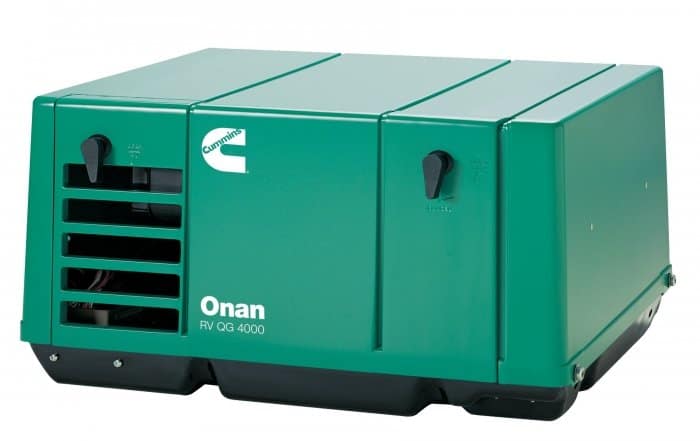
The New Year is around the corner which means it’s time for a New Year Resolution. Many RVers will resolve to get more exercise, like hiking more on their RV trips. Most RV owners know how to winterize their generator, but not everyone knows that running it from time to time is also important. This is what we call exercising your RV generator.
Why you should exercise your RV generator
- Running your generator once a month will keep things lubricated, which prevents carbon build-up.
- The heat from running the generator will also eliminate water build-up. Moisture in your tank is never a good idea. It will make things rusty, which is something you want to avoid.
Gasoline and diesel start to degrade after about 30 days of inactivity. Gasoline will start to varnish, resulting in surging problems, and diesel will start to grow mold and gel in cold weather. So how are you going to prevent this? First, it’s imperative that you use a quality fuel stabilizer. You should also top off your fuel tank, and of course, you need to exercise your RV generator.
How to exercise your RV generator
First, you have to make sure there’s no risk of carbon monoxide poisoning. Inspect your generator’s exhaust system and confirm that everything hangs tight. If you see any kind of damage, do not run your generator!
If you have a portable RV generator, ensure that the exhaust is directed far away from the campsite. Carbon monoxide is very dangerous because you can’t smell it. If you inhale too much of the stuff, you get knocked out and eventually die.
For this very reason, you should have a carbon monoxide detector in your RV. When you’re sure it works, it’s time to run your generator.
As you can see in this manual, Cummins Onan recommends running your generator for at least two hours each month at 50% of its rated power (load). Note that this is just an example.Other manuals may recommend other methods.
So what is the load of your generator and how do you find it? The rated power or load is how much power (watt) your generator can deliver. In most cases, your generator’s load will be displayed at the front or back. You can also use Google to find the user’s manual, which will certainly mention the load of your generator.
Common load values are 5000 watts, 4500, 4000, 2500, 2000 and so on. You may also want to know that 1000 watts equals 1 kilowatt.Here are a few links to owner’s/operator’s manuals of popular brands:
So if we use this Onan example for a 4000 watts generator, you should drain it with 2000 watts for two hours. You can achieve this by using a high-power device or by plugging in a few low-power devices. I found a chart online that shows the typical appliance energy use. Check it out here. You should also know that it’s better to run a single two hour exercise period than several shorter sessions.
Final words
Exercising your RV generator is an important step that you can’t afford to skip. Here are the steps again in a nutshell:
- Make sure there’s no risk of carbon monoxide poisoning.
- Find the right manual using Google.
- Determine your generator’s load.
- Use the quick tip I gave you to find the right chapter.
- Follow the instructions for exercising your generator.
Good luck!
About The Author
Storm really loves camping, so much so that he has a tent in his backyard in which he regularly camps with his friends. If you don’t find him in nature, he’s probably studying, reading or working on his website, www.linktonature.com.



